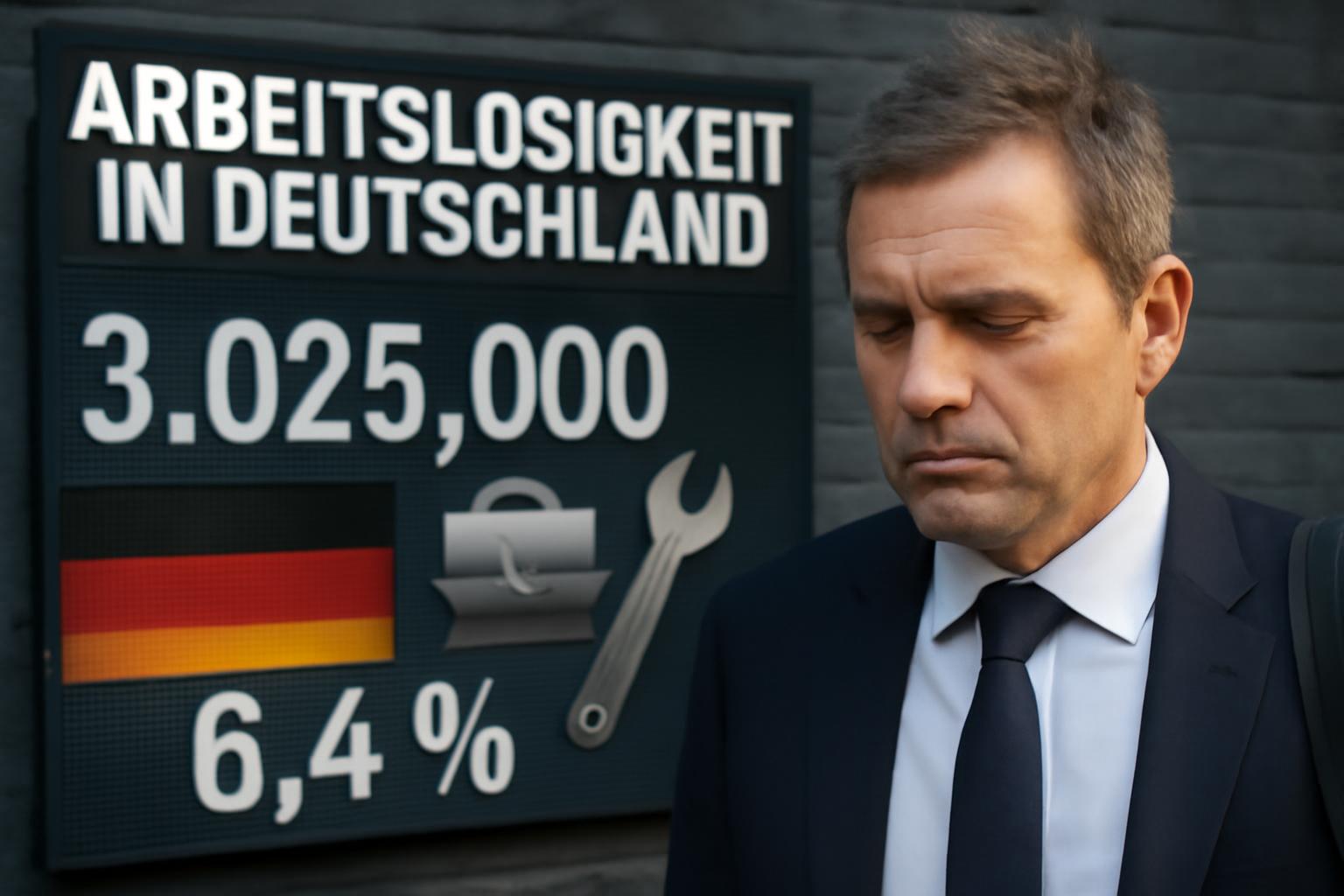New figures from Germany show August bringing 3.025 million unemployed, up 46,000 from July and 153,000 higher than a year ago, with the jobless rate edging to 6.4 percent. The Federal Employment Agency explains the rise as a seasonal summer lull and soft economic activity, while some voices insist the labour market is still being pressed by the downturn but may be stabilising. August is traditionally weak for hiring as firms pause before holidays and training contracts end. There are sharp regional contrasts: Bremen and Berlin suffer the highest unemployment, while Bavaria and Baden-Wuerttemberg remain comparatively spared. The data, compiled up to 13 August, sit alongside an IAB barometer suggesting the recent uptick in unemployment could be slowing for the first time in years. Yet Ifo’s Clemens Fuest warns of negative economic consequences from weak private consumption, even as real disposable incomes rise and households save amid uncertainty, urging structural reforms rather than debt-financed measures to spark private investment and job creation. The broader picture also highlights persistent difficulties in securing apprentices, a shrinking supply of training places, and concerns about bureaucratic burdens and high taxation.
The numbers tell a story not merely of a month’s wobble but of a social order trying to rehearse itself into a future it does not quite understand. The market’s price signals are supposed to knit dispersed knowledge into coordinated action—yet there is a growing belief that politics presumes to substitute the price mechanism with a plan. When unemployment rises in a land of diverse regions and firms, it is not simply a failure of activity but an index of who has the right to decide where resources shall flow. The state’s reflex to smooth the curve with debt-financed exhortations treats symptoms while delaying the cure: a restoration of confidence through stable, predictable conditions that allow individuals and firms to adapt to changing circumstances without fear of arbitrary constraint.
The call for structural reform is the only honest remedy in this hour. Not because a reformist impulse is novel, but because it recognises that long-run prosperity fires not from the generosity of spending but from the freedom to innovate, hire, and reallocate resources according to revealed preferences. If private consumption remains weak while incomes rise, the lesson is not that demand must be propped up by more borrowing, but that households respond to uncertainty with precaution. A society that seeks lasting employment must reduce the frictions that dull the price system’s capacity to guide effort: lower burdens on enterprise, simplify and stabilise the tax code, cut bureaucratic hurdles, and realign training and apprenticeships with the authentic needs of firms rather than with quotas or grandiose schemes.
A free people do not create jobs by decree; they create the conditions in which jobs arise wherever scarce skills and capital meet opportunity. The regional disparities, the apprenticeship bottlenecks, the persistent tax and regulatory drag—these are not mere inconveniences but the visible costs of a framework that still treats labor as a controllable variable rather than a living process of dynamic exchange. If the intention is to foster real employment, let policy be steady, predictable, and oriented toward enabling private investment to flourish. Let the state retreat from attempts to micro-manage demand and instead reaffirm the principle that the best social insurance is a vibrant, flexible economy in which individuals are free to act on their knowledge and responsibilities, and in which resources gravitate toward their most valued use through honest prices, voluntary cooperation, and the continual recalibration that only a free market can sustain.
